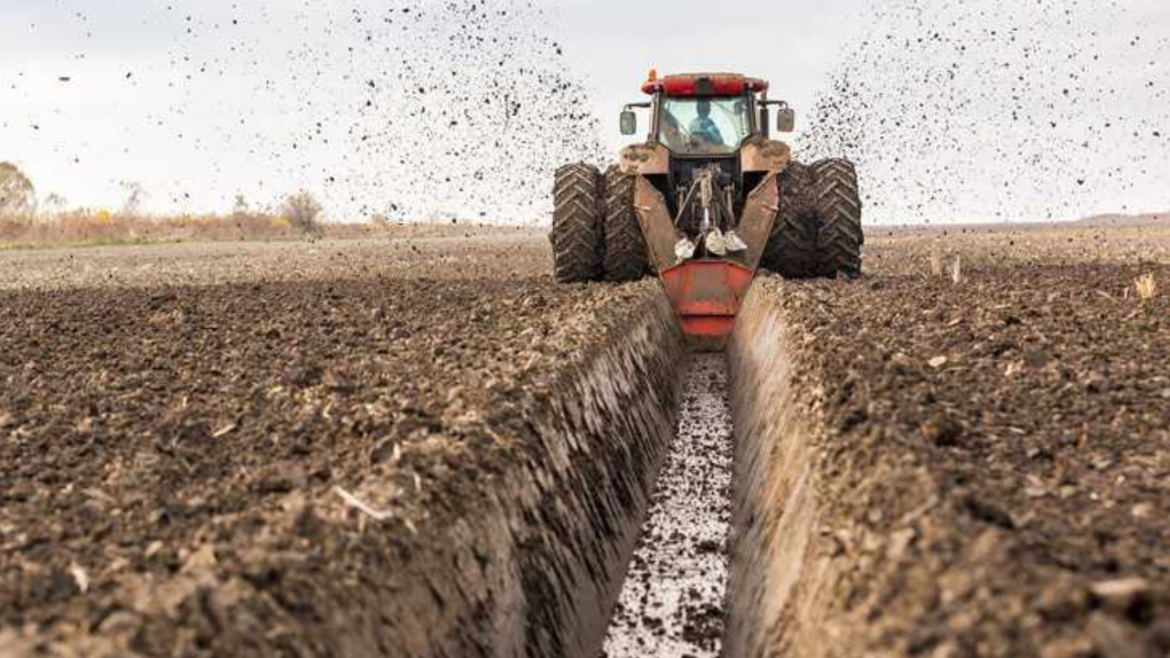Replacing trencher teeth and trencher wear parts is an essential maintenance task that ensures the efficiency and longevity of trenching machines. Over time, trencher teeth can wear out or become damaged due to the abrasive nature of the ground they cut through.
To maintain optimal performance and prevent potential hazards, timely trencher teeth replacement is crucial. In this comprehensive guide, we will walk you through the step-by-step process of replacing trencher teeth. Regularly inspecting and replacing worn or damaged teeth will not only prevent potential hazards but also extend the overall lifespan of the trenching equipment.
Steps to Follow
Given steps cans be followed to replace trencher teeth and trencher wear parts:
Step 1: Safety Precautions
Before starting any maintenance work, safety should be the top priority. Ensure the trenching machine is turned off, and the engine is cool. Use appropriate personal protective equipment, such as gloves and safety glasses, to protect yourself from any potential hazards.
Step 2: Remove Worn Teeth
To begin the replacement process, locate the worn or damaged trencher teeth that need to be replaced. Depending on the design of the trenching machine, you may need to use a wrench or a specialized tool to loosen the bolts securing the teeth. Carefully remove the old teeth from their holders or mounts.
Step 3: Clean and Inspect
With the old teeth removed, take the time to thoroughly clean the teeth mounts and the surrounding areas. Use a brush or compressed air to remove any debris or dirt that may have accumulated. This step is essential to ensure a proper fit for the new trencher teeth.
While cleaning, inspect the teeth mounts for signs of wear or damage. Look for any cracks or deformities that could affect the performance of the new teeth. If you notice any issues with the mounts, consider replacing or repairing them before proceeding with the installation of the new teeth.
Step 4: Select the Right Replacement Teeth
Choosing the right replacement trencher teeth is crucial for optimal performance. Consider the specific trenching application, ground conditions, and the type of trencher machine being used. Opt for high-quality teeth made from durable materials to ensure longevity and efficiency in trenching operations.
Step 5: Install New Teeth
Once you have selected the appropriate replacement teeth, it’s time to install them. Carefully insert the new trencher teeth into their respective mounts, ensuring they are securely fitted. Align the teeth properly to achieve the desired cutting depth and efficiency.
After positioning the teeth, tighten the bolts to the manufacturer’s recommended torque specifications. Ensure that the teeth are securely fastened to prevent any issues during trenching operations.
Step 6: Test and Adjust
With the new trencher teeth installed, it’s crucial to test the trenching machine in a controlled environment to ensure that the teeth are functioning correctly. Make any necessary adjustments to achieve the desired cutting depth and efficiency.
Step 7: Regular Maintenance and Inspection
To extend the life of the newly replaced trencher teeth, implement a regular maintenance and inspection schedule. Follow the manufacturer’s guidelines for lubrication, cleaning, and general upkeep. Conduct routine inspections to identify any signs of wear or damage early on and address them promptly.
Step 8: Seek Professional Assistance if Needed
While the process of trencher teeth replacement can be straightforward, it is essential to seek professional assistance if you are unsure or encounter any challenges during the process. Experienced technicians can offer guidance and ensure that the replacement is done correctly, maximizing the efficiency and safety of the trenching machine.
Final Wording
Replacing trencher teeth and trencher wear parts is a vital maintenance task that ensures the smooth operation and longevity of trenching machines. By following the step-by-step process and conducting regular maintenance, trencher teeth can deliver reliable and efficient performance, enhancing productivity in trenching operations.
